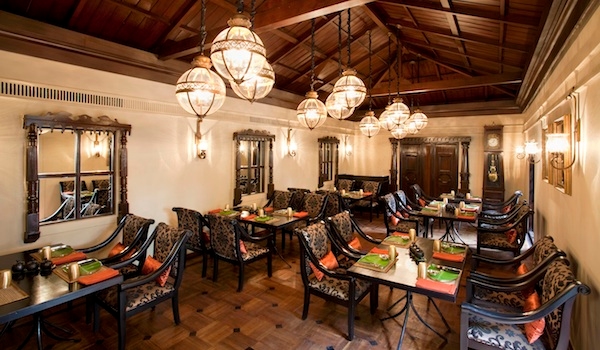Once upon a time, menus were simple: you chose between appetizers, mains, and desserts. But step into a modern fine dining restaurant today, and you’re likely to encounter dishes with names that read like abstract art, infused with culinary jargon, obscure ingredients, and unnecessarily complex descriptions. This shift raises a very real question: Are fine dining menus getting too pretentious?
As fine dining restaurants in India gain global recognition and continue to evolve, they are simultaneously walking a fine line between creativity and overindulgence in complexity. Is this trend enriching the culinary experience—or simply turning it into an elitist performance?
Decoding the Culinary Lexicon
You sit down, open the menu, and read:
“Charcoal-infused heirloom beetroot medallion with saffron foam, edible soil, and micro greens”.
Wait—what? While some diners may find such language intriguing or artistic, many feel overwhelmed, even alienated. The use of high-brow, often foreign terminology can make a meal feel more like an exam in culinary linguistics than an enjoyable dining experience.
One of the major criticisms of modern fine dining is this growing trend toward intellectualizing food. It’s no longer about flavor profiles or comfort—it’s about storytelling, philosophy, and concepts. And while that has a place, it risks alienating everyday diners.

Exotic Doesn’t Always Mean Better
Fine dining menus today often boast ingredients sourced from remote corners of the globe—Peruvian corn, Icelandic sea salt, Japanese yuzu, or French truffle oil. While global cuisine is exciting and diverse, overusing exotic ingredients can feel more like a competition than a commitment to flavor.
In the context of fine dining restaurants in India, this tendency to glorify foreign ingredients sometimes comes at the cost of ignoring incredible local produce. India’s diverse landscape offers everything from Himalayan herbs to coastal spices, but these are too often sidelined in favor of imported flair.
At what point does innovation turn into affectation?
Simplicity Is an Art, Too
There’s a misconception that complexity equals sophistication. However, many of the world’s greatest dishes—like a well-made dal or a perfectly roasted chicken—rely on simplicity, balance, and technique rather than over-decoration.
In their quest for distinction, many fine dining chefs have embraced molecular gastronomy, theatrical plating, and layered compositions. While these techniques are impressive, they can sometimes overpower the actual flavors or diminish the emotional connect diners feel with familiar foods.
Food is, at its heart, emotional. When the focus shifts entirely to showmanship, the soul of the dish is often lost.
The Rise of the “Tweezer” Culture
A major contributor to the current pretentiousness is the obsession with plating perfection. There’s even a name for it in the culinary world—“tweezer food.” Chefs now use tweezers to precisely place micro herbs or edible petals on dishes, prioritizing aesthetic over ease.
While artistic presentation is a hallmark of fine dining, it shouldn’t overshadow what matters most: taste. A beautiful dish that fails to satisfy the palate ultimately disappoints.
This obsession with visuals—fueled by Instagram culture—has nudged some fine dining restaurants in India to place more weight on how a dish looks than how it feels or tastes.
Are Diners Being Talked Down To?
Another factor that adds to the pretentious aura is the over-explaining done at fine dining establishments. Diners are often given a multi-minute monologue with each course, explaining the inspiration behind the dish, the cooking process, and every element on the plate.
While context can enhance appreciation, there’s a fine line between storytelling and condescension. Not every diner wants a lecture—they want to eat, enjoy, and connect with the food on their own terms.
This performative aspect of fine dining can feel scripted and inauthentic, as though the restaurant is trying too hard to justify the price tag.
The Erosion of Cultural Authenticity
Many Indian fine dining restaurants have taken to “modernizing” traditional dishes—think butter chicken foam, samosa dust, or idli crumble. While innovation is commendable, there’s a danger in distancing dishes too far from their origins.
Some of these transformations leave diners wondering if they’re eating art installations rather than food rooted in culture and memory. If a dish no longer resembles or honors its origin, does it still deserve the name?
Pretentiousness creeps in when modernity comes at the expense of cultural context—when the focus is more on shock and awe than heritage and soul.
Is There a Middle Ground?
Fortunately, not all is lost. Some of the most respected fine dining restaurants in India are finding a balance between elegance and authenticity. They’re crafting menus that are thoughtful but not theatrical, inventive but not inaccessible.
These establishments focus on seasonal ingredients, regional stories, and taste-driven innovation rather than just visual drama or obscure language. They cater to both connoisseurs and newcomers, making the experience inclusive rather than intimidating.
Fine dining doesn’t have to be a pretentious performance—it can be a celebration of culinary art grounded in simplicity and sincerity.
What Role Do Discovery Platforms Play?
With so many choices and styles, diners often rely on curated guides to help them pick restaurants that align with their preferences. Platforms like Zonezapper serve as a bridge between curious foodies and the best fine dining experiences across India—helping navigate through the noise and discover restaurants that prioritize genuine culinary artistry over inflated showmanship.
Final Thoughts: Time to Rethink the Script
The question isn’t whether fine dining is valid—it absolutely is. But the direction it's headed deserves scrutiny. When a dining experience becomes more about complexity than comfort, exclusivity than inclusivity, or aesthetics than authenticity, it risks becoming hollow.
It’s time for fine dining to reconnect with its roots: hospitality, joy, and flavor. Strip away the unnecessary frills, tone down the drama, and let the food do the talking. Because at the end of the day, a great meal doesn’t need a translator—or a thesaurus.
